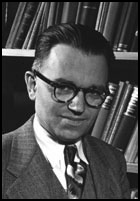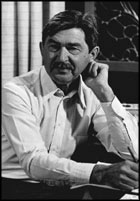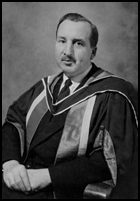About the Department
Located in the historic Thorvaldson building, its 1960s addition and the new teaching and research facilities of the 2003 Spinks addition, the Department of Chemistry is situated at the geometric and scientific heart of the University of Saskatchewan.
The current departmental staff including 19 faculty, 5 adjunct professors, 4 associate professors, 9 research associates, 7 postdoctoral fellows, 15 support staff, and approximately 70 graduate students are engaged in a variety of research programs that cover both the traditional and emerging, interdisciplinary areas of the chemical sciences.
Undergraduate students have access to a number of innovative programs and courses including a number of opportunities to become directly involved in research, either as part of their course work or through summer research grants and scholarships. The moderate size of the department also ensures students can develop strong interactions with their teachers and supervisors.
Research and teaching in the department is well supported with modern research instrumentation, including significant new facilities for biomolecular characterization and through its campus connections to the Canadian Light Source (CLS) and the Saskatchewan Structural Science Centre (SSSC) which provide research facilities that are unique nationally and globally.
History of the Department
The Department of Chemistry has a proud history of research excellence and contribution to society, going back to the second chair of the department, Dr. Thorbergur Thorvaldson, who developed a concrete that is highly resistant to alkaline soil, enabling builders to significantly increase the durability of concrete structures. The department is proud to have been associated with two Nobelists: Gerhard Herzberg and Henry Taube, the latter a graduate of the department (B.Sc. 1935; M.Sc. 1937). The department also benefited greatly from the pioneering science and leadership of John W.T. Spinks who was the department head and later became the university president.
Dr. Gerhard Herzberg, 1904-1999
 Dr. Gerhard Herzberg received the Nobel Prize for Chemistry in 1971 for "his contributions to the knowledge of electronic structure and geometry of molecules, particularly free radicals."
Dr. Gerhard Herzberg received the Nobel Prize for Chemistry in 1971 for "his contributions to the knowledge of electronic structure and geometry of molecules, particularly free radicals."
In the presentation speech it was stated that "Dr. Gerhard Herzberg is generally considered to be the world's foremost molecular spectroscopist and his large institute in Ottawa is the undisputed center for such research. Herzberg's elegant experimental investigations combined with his theoretical insight into their interpretation contributed to the progress of quantum mechanics while being decisive for the rapid development of molecular spectroscopy."
Dr. Herzberg was born in Hamburg, Germany in 1904 and received his Bachelor's degree in 1927 and his Ph.D. degree in 1928, both in engineering, from the Darmstadt Institute of Technology. The Nazi persecution of Jews forced Dr. Herzberg to emigrate to Canada in 1935, and for a decade he was research professor and teacher at the University of Saskatchewan where he established a spectroscopy laboratory. In his acceptance speech he said, "It is obvious that the work that has earned me the Nobel Prize was not done without a great deal of help. First of all, while at the University of Saskatchewan I had the full and understanding support of successive Presidents and of the Faculty of the University who, under very stringent conditions, did their utmost to make it possible for me to proceed with my scientific work."
Biography
In the early 1920s, when young Gerhard Herzberg chose astronomy as his preferred profession, his application to Germany's Hamburg Observatory came back with the advice that "there is no point in thinking of a career in astronomy unless one has private means of support."
It was the only "credential" Herzberg lacked. His support came from his mother, widowed when Herzberg was 10. Mrs. Herzberg eventually emigrated to Wyoming for a housekeeper's position that enabled her to send small amounts back to her two sons in Germany. The young Herzberg endured those lean and lonely years by immersing himself in mathematics, chemistry and physics.
These interests brought him to the attention of a superb high school physics teacher, Herr Hillers, who was in touch with the revolutionary theories then driving physics. He introduced Herzberg to the ideas of such scientists as the great Danish physicist Niels Bohr, whose atomic theories were laying the foundation for quantum mechanics. Faced with the discouraging response from the observatory, Herzberg was advised by his mentors to apply to Darmstadt's Technical University, which had just created a new course, Engineering Physics.
Assisted by a private scholarship from a German industrialist, Herzberg entered the Technical University in 1924. By 1928, the 24-year-old Herzberg had completed his Doctor of Engineering Physics degree and published 12 papers in atomic and molecular physics. Consequently, he had no difficulty in obtaining a post-doctoral fellowship at one of the outstanding physics centres of the time, the University of Göttingen. At Göttingen, Herzberg worked under Max Born and James Franck, stars of the era, who were applying quantum mechanics to the mysteries of molecular structures. He then spent a second post-doctoral year at the University of Bristol, where he investigated the electronic structure of diatomic molecules.
In 1930, Herzberg returned to Darmstadt to be a "Privatdozent," which allowed him to lecture without pay, to earn a small salary in return for managing undergraduate research labs, and to carry out his own research. During the next five years, he concentrated on spectroscopy, collaborating with other young scientists, including Edward Teller, with whom he published a major paper on vibrational structures of electronic transitions in polyatomic molecules.
In 1932, Herzberg's group included John W. T. Spinks, a visiting scientist from Saskatoon, a place Herzberg had never heard of, but was soon to know well. In 1934, Herzberg was notified that he would be dismissed because his wife was Jewish, and he realized they would have to leave Nazi Germany. He asked Spinks if the president of the University of Saskatchewan, Dr. Walter C. Murray, could help him find employment in Canada. Well aware that, at 30, Herzberg was already one of the world's leading molecular physicists, Dr. Murray wrote to both the University of Toronto and the National Research Council. He then added:
"Should neither of you feel inclined to invite him to come, we would do so with joy, although we have not sufficient means to provide him with proper equipment for his work, but a man of his power and resource can make much of little."
Given the restraints imposed by the depression then underway, neither institution was able to take advantage of this opportunity, so the University of Saskatchewan, despite "only a bunch of I.O.U.s" in the President's safe, offered Herzberg a position (supported for two years by the Carnegie Foundation). The Herzbergs arrived in Saskatoon in September, 1935, "with $2.50 in my pocket," as Herzberg recalls.
The rest of the story is well known to much of the Canadian science community. The Herzbergs spent ten years in Saskatoon, where his work on molecular and atomic spectroscopy continued to advance the field and resulted in three of his six classic books on the subject. In 1945, the University of Chicago offered Herzberg the extensive and sophisticated facilities of its renowned Yerkes Observatory. To a man who had never forgotten his early ambitions to be an astronomer, and who was now pursuing research related to comets and planetary atmospheres, the offer was irresistible, despite his strong affection for Saskatchewan.
At Yerkes, Herzberg quickly established a laboratory for investigating planetary spectra by pioneering methods that became standard worldwide, and enabled his group to study the absorption spectra (see sidebar) of many molecules of astrophysical interest. Yet Herzberg stayed at Yerkes only three years. The Herzberg family missed Canada, and when in 1948 NRC invited Herzberg to establish a laboratory for fundamental research in spectroscopy, he accepted.
At NRC, Herzberg immediately began assembling a group of young spectroscopists who were to specialize in experimental techniques for studying the microwave, infrared, visible and vacuum ultraviolet regions of the electromagnetic spectrum. In addition, when appointed Director of the Division of Physics, he established new groups in solid state and theoretical physics. Under Herzberg's leadership, NRC became a world leader in spectroscopy, a position for which NRC is still respected today.
Furthermore, the laboratory's influence on Canadian science extended well beyond the borders of NRC. Many scientists who worked at NRC, including Canada's second Nobel Laureate in Chemistry, John Polanyi, became internationally recognized leaders in related fields such as chemical physics and laser science.
Dr. Herzberg won his Nobel Prize in Chemistry in 1971 "for his contributions to the knowledge of electronic structure and geometry of molecules, particularly free radicals." But his ground-breaking research did not end there. Dr. Boris Stoicheff, the University of Toronto spectroscopist who was a member of Herzberg's NRC lab for 13 years, and who is writing Dr. Herzberg's biography, stresses that the Nobel Laureate's productivity did not end with the award.
"Dr. Herzberg has kept up his research at his usual high level," he says. "In addition to the identification of the water ion in the comet Kohoutek, and his discovery in the early 1980s of triatomic hydrogen (for which he won a prestigious American Physical Society medal), he has continued to produce new knowledge on hydrogen and free radicals. Even in his 90th year, he is enthusiastically pursuing the identification of complex spectra and the enigmatic 'diffuse interstellar lines', known for about 60 years, but to date still neither identified nor reproduced in a laboratory. He may spend more time now at his music and reading of biographies, but I am sure he will continue to actively pursue solutions to molecular puzzles for many years to come."
Dr. Henry Taube, 1915 – 2005
 Dr. Henry Taube received the Nobel Prize in Chemistry in 1983. His Nobel citation reads "for his studies of the mechanisms of electron transfer reactions particularly of metal complexes." It was said that his work "dominated the development of his subject both theoretically and experimentally, making 18 major discoveries."
Dr. Henry Taube received the Nobel Prize in Chemistry in 1983. His Nobel citation reads "for his studies of the mechanisms of electron transfer reactions particularly of metal complexes." It was said that his work "dominated the development of his subject both theoretically and experimentally, making 18 major discoveries."
Dr. Taube was born in Neudorf, Saskatchewan and received his B.Sc. (1935) and his M.Sc. (1937) from the University of Saskatchewan. In 1940 he completed his Ph.D. at the University of California (Berkeley).
In his acceptance speech, Dr. Taube said, "But the benefits of science are not to be reckoned only in terms of the physical. Science as an intellectual exercise enriches our culture and is in itself ennobling. Each new insight into how the atoms in their interactions express themselves in structure and transformations, not only of inanimate matter, but particularly also of living matter, provides a thrill."
Dr John T. W. Spinks, 1908 – 1997
 Dr. John T. W. Spinks was awarded his Ph.D. in chemistry from the University of London at the age of 22 and then joined the Department of Chemistry at the University of Saskatchewan as an Assistant Professor in 1930. He was promoted to Professor in 1938 before becoming Department Head in 1948 and the Dean of Graduate Studies in 1949. Dr. Spinks was then the President of the University of Saskatchewan from 1960-1975.
Dr. John T. W. Spinks was awarded his Ph.D. in chemistry from the University of London at the age of 22 and then joined the Department of Chemistry at the University of Saskatchewan as an Assistant Professor in 1930. He was promoted to Professor in 1938 before becoming Department Head in 1948 and the Dean of Graduate Studies in 1949. Dr. Spinks was then the President of the University of Saskatchewan from 1960-1975.
Dr. Spinks’ scientific accomplishments, in the area of radiation chemistry and the use of isotopes, led to over 200 scientific papers and the co-authorship of the book “An Introduction to Radiation Chemistry” with R. J. Woods. Later, he also published “A Decade of Change: The University of Saskatchewan 1959-1970” and his autobiography, “Two Blades of Grass”.
The University of Saskatchewan awarded Dr. Spinks an Honorary Degree in 1990 and in 2003 the new Department of Chemistry Spinks building, which houses many of our new teaching and research laboratories, was named in his honour to commemorate his many contributions.
Information for this brief history of Dr Spinks was obtained from the University of Saskatchewan Archives

